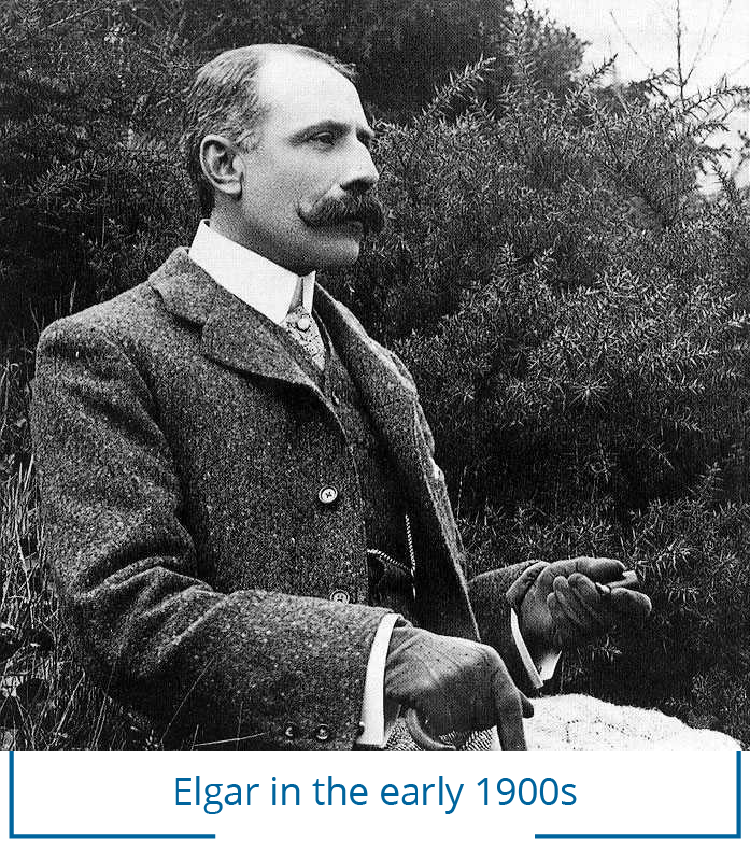SERENADE FOR STRINGS, OP. 20
Edward Elgar
(b. Broadheath, near Worcester, England, June 2, 1857; d. Worcester, February 23, 1934)
Composed 1892; 12 minutes
 “I like ’em; the first things I ever did,” Elgar said of three pieces for string orchestra he wrote in 1888. Four years later, he reworked the pieces into the attractive, gentle Serenade for Strings. It was the earliest of his works to become widely known and remains the earliest of his music in today’s repertoire. Its success was not accidental. Elgar was a violinist of some skill and brought an insider’s knowledge to the notes he put down on paper. When he wrote concertos for violin and cello as well as a sonata for violin, they were amongst the most personal and idiomatic of his works. Even after these later successes, beginning with the Enigma Variations in 1899, the Serenade was to remain Elgar’s favorite work. He conducted it in his last recording sessions the year before he died.
“I like ’em; the first things I ever did,” Elgar said of three pieces for string orchestra he wrote in 1888. Four years later, he reworked the pieces into the attractive, gentle Serenade for Strings. It was the earliest of his works to become widely known and remains the earliest of his music in today’s repertoire. Its success was not accidental. Elgar was a violinist of some skill and brought an insider’s knowledge to the notes he put down on paper. When he wrote concertos for violin and cello as well as a sonata for violin, they were amongst the most personal and idiomatic of his works. Even after these later successes, beginning with the Enigma Variations in 1899, the Serenade was to remain Elgar’s favorite work. He conducted it in his last recording sessions the year before he died.
 The opening movement is bound together by the bouncy rhythmic figure heard at the beginning on the violas. Over it, Elgar builds beautifully arching melodies underpinned by a distinctive melancholy. The slow movement is a noble elegy and the heart of the Serenade. Perfectly realized in shape, it anticipates the Nimrod movement in the Enigma Variations and the slow movements of the symphonies. The finale eloquently brings back themes from the opening movement.
The opening movement is bound together by the bouncy rhythmic figure heard at the beginning on the violas. Over it, Elgar builds beautifully arching melodies underpinned by a distinctive melancholy. The slow movement is a noble elegy and the heart of the Serenade. Perfectly realized in shape, it anticipates the Nimrod movement in the Enigma Variations and the slow movements of the symphonies. The finale eloquently brings back themes from the opening movement.
